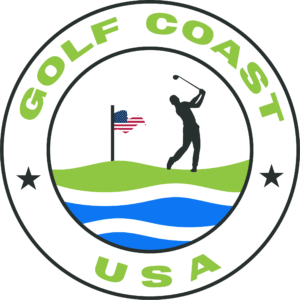As a devoted chronicler of the nuances of the golfing world and a Myrtle Beach local, I have always been fascinated by how the elements impact the game. One of the climatic factors that significantly determine a golfer’s strategy is wind. Playing a round of golf in Myrtle Beach forces one to consider the wind patterns and use them to their advantage. This post delves into how wind affects the golf course strategy in Myrtle Beach, a prime golfing destination with over a hundred courses, each uniquely impacted by the Atlantic Ocean’s breezes.
The Impact of Wind on Golf Shots
Before we delve into the specific effects of wind on Myrtle Beach courses, let’s consider why wind is such an influential factor in golf. Wind alters the direction, trajectory, and distance of golf shots. A headwind (wind blowing directly opposite the direction of the shot) can impede the golf ball mid-flight, reducing its speed and distance. A tailwind, or wind blowing in the same direction as the shot, can carry the ball farther than anticipated, while a crosswind can cause the ball to deviate sideways from its intended course.
Myrtle Beach Climate and Its Impact on Wind Patterns
Myrtle Beach’s coastal location causes distinctive wind patterns. The weather fluctuates, transitioning from hotter inland to cooler seaward breezes. During mornings, calmer winds often prevail, intensifying as the day progresses, peaking in the afternoon before tapering off towards evening. Understanding this progression is essential for golfers planning their day around the wind conditions.
Strategizing with Wind in Mind
The gamesmanship of golf in Myrtle Beach becomes most apparent when players learn to adjust their strategy to accommodate wind conditions. For instance, when playing into a headwind, it’s recommended to use a lower lofted club and adopt a more controlled swing. This strategy attempts to decrease the ball’s hang time, reducing the wind’s impact on the flight trajectory.
Golfers use a similar strategy when hitting a crosswind shot. They aim away from the target and let the wind carry the ball toward it, a technique known as “playing the wind.” This strategy is crucial in Myrtle Beach, given the number of courses built along the coastal area where the wind prevails.
Understanding Specific Courses
Myrtle Beach is home to a variety of courses, each with their unique interplay with wind conditions. For instance, golfers playing at the Dunes Golf and Beach Club have to negotiate heavy ocean breezes. The course is designed with numerous water hazards and bunkers challenging players to adjust their play according to the wind.
Another noteworthy course is the Tidewater Golf Club. It boasts its signature 13th hole, a par-3 demanding an accurate shot over the marsh to a green exposed to the wind. The incoming sea breeze makes selecting the right club to make the crucial tee shot essential.
Conclusion
In conclusion, the impact of wind on golf course strategy in Myrtle Beach cannot be overstated. The coastal climate consistently introduces wind as a variable into the game, influencing shot selection and overall strategy. This additional challenge rather than detracts, enriches the golfing experience. As a golfer, learning how to adjust and accurately read the wind will undoubtedly aid in enhancing your golfing proficiency and perhaps, your appreciation for the beautiful complexity that is golf in Myrtle Beach.

2 Comments
SandyGreens
Ah yes, the fickle mistress that is wind! I’ve found the unpredictability of it to be part of the charm of golfing in Myrtle Beach. As nerve-wracking as it can be, threading a shot through the breeze and landing it exactly where you wanted is just…💯. And remember folks, when the winds get too much – ‘When it’s breezy, swing easy!’ 😉.
7qs86
Great write-up as usual. I’ve been golfing in Myrtle Beach for years, and these wind factors always make for a more challenging (and at times, frustrating!) game. But, as you say, it adds another layer to the sport and tests our ability to adjust and strategize. I’m curious though: have you found certain times of the year when the wind patterns are most predictable?